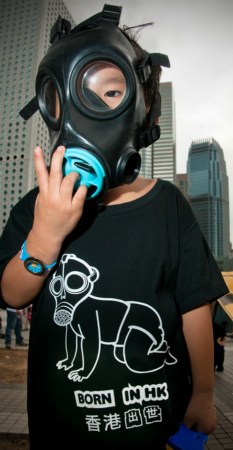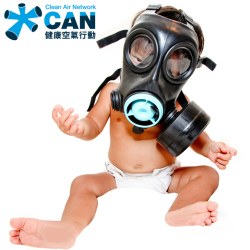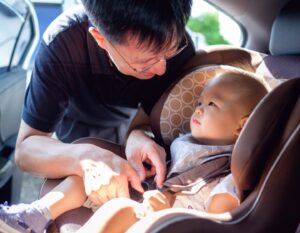Poor air quality is Hong Kong’s number one public health problem, the most harmful source being roadside pollution, pollutants emitted by vehicles on our roads. In 2010, Hong Kong saw its worst roadside pollution levels to date. Here, our friends at the Clean Air Network outline some of the scary facts about the air we breathe and how you CAN make a difference.
Though air pollution affects us all, some suffer more than others – our children being particularly vulnerable. In the case of children, their susceptibility stems from their breathing rates being higher than that of adults, resulting in a much higher absorption rate of pollutants. Their airways are also smaller and their immune systems less developed. Even more alarmingly, the health impacts of air pollution can affect them even before they are born.
– Pregnant women who are exposed to high levels of air pollutants, or who live within 400 meters of busy roads, have an increased risk of giving birth prematurely and having babies with low birth weights. (Environmental Health Journal, 2011 and UCLA Institute of the Environment and Sustainability, 2008).
– Air pollution can have long-lasting effects on the mental development of an unborn child. Young children whose mothers were exposed to roadside pollution during pregnancy were shown to have lower IQs (by approximately 4 points) and more symptoms related to attention problems, anxiety and depression (American Academy of Pediatrics, 2009 and Environmental Health Perspectives, 2011).
– Children born to mothers who live close to freeways have been found to have twice the risk of developing autism (Environmental Health Perspectives, 2010).
– Young children exposed to nickel, vanadium and black carbon, which originate from vehicle exhaust, often wheeze or cough (American Journal of Respiratory and Critical Care Medicine, 2001).
– Long term exposure to traffic air pollutants is also linked to an increased risk of illnesses, such as ear/nose/throat infection and the flu, in children. (American Journal of Respiratory and Critical Care Medicine, 2002).
– As children are still growing, their lungs are still developing, therefore, breathing in air pollutants can permanently impair their lung function and respiratory capacity. This can easily lead to a lifetime of weakened health (New England Journal of Medicine, 2004).
– Air pollution has been shown to adversely affect levels of maximum oxygen uptake in children, and therefore, physical exercise in highly polluted areas might not have any beneficial effect on cardiopulmonary fitness (Chinese University of Hong Kong, 2004).
– Living close to highways and major roads (e.g. within 100 to 150 meters) has been shown to exacerbate, or even cause the development of, asthma in children. Children aged four and under are the most at risk for asthma attacks from traffic-related air pollution. (Environmental Health Perspectives, 2006 and Medical Journal of Australia, 2010).
– Air pollution is shown to cause brain inflammation and nerve cell damage leading to a lower IQ, as well as memory and motion impairment in both kids and adults (Toxicologic Pathology, 2008 and Environmental Health Perspectives, 2011).
– Babies and toddlers who live in areas with moderate air pollution may have a higher risk of middle-ear infection than those breathing cleaner air (American Journal of Epidemiology, 2009).
– Children who live within 100 meters of a busy roadway have a greater risk of developing leukaemia and a 65% increased risk of contracting pneumonia (Environmental Health Perspectives, 2011 and The Proceedings of the American Thoracic Society, 2009).
– The Bottom Line? The negative impacts of air pollution on children are varied and serious, and if exposed from an early age, a child will suffer impaired health for life.
What can parents do to tackle the problem?
 • The most effective method is to avoid exposure in main intersections with heavy air pollution. Levels of air pollution are much lower even just one street away. Paper or surgical face masks offer little to no protection at all.
• The most effective method is to avoid exposure in main intersections with heavy air pollution. Levels of air pollution are much lower even just one street away. Paper or surgical face masks offer little to no protection at all.
 View All
View All











 View All
View All





 View All
View All


 View All
View All














